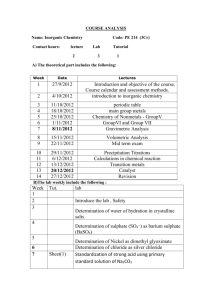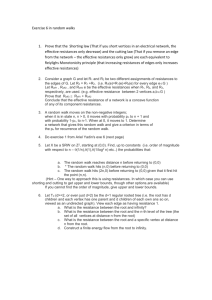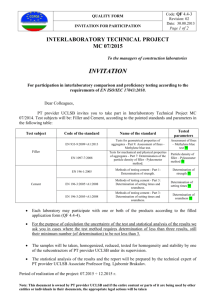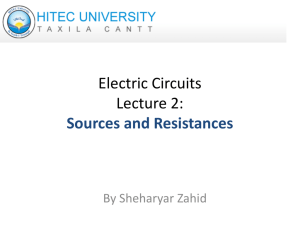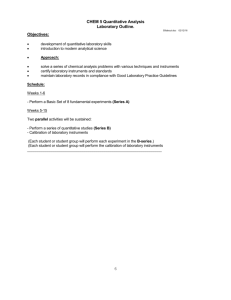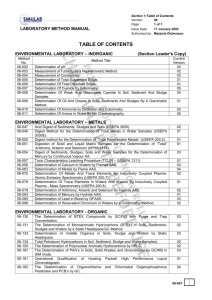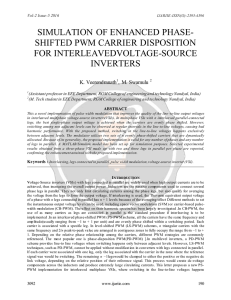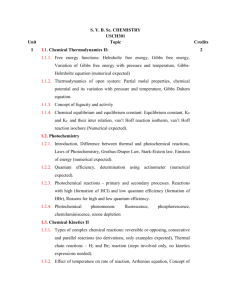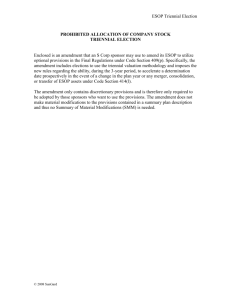Supplemental Material
advertisement
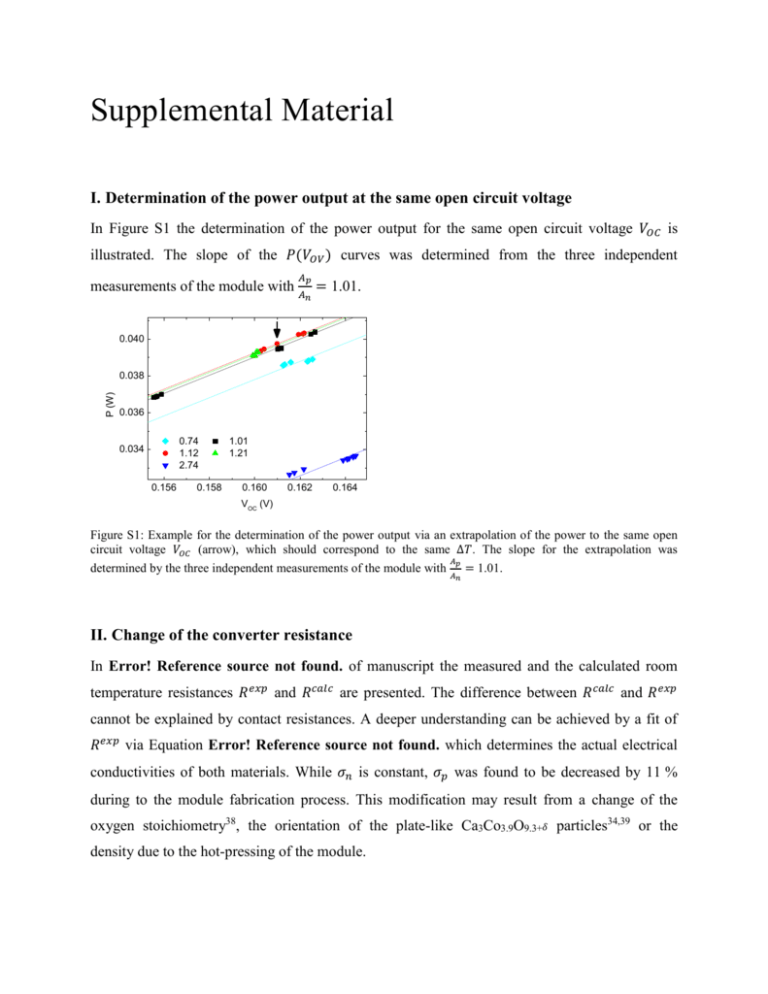
Supplemental Material I. Determination of the power output at the same open circuit voltage In Figure S1 the determination of the power output for the same open circuit voltage 𝑉𝑂𝐶 is illustrated. The slope of the 𝑃(𝑉𝑂𝑉 ) curves was determined from the three independent 𝐴𝑝 measurements of the module with 𝐴 = 1.01. 𝑛 0.040 P (W) 0.038 0.036 0.74 1.12 2.74 0.034 0.156 0.158 1.01 1.21 0.160 0.162 0.164 VOC (V) Figure S1: Example for the determination of the power output via an extrapolation of the power to the same open circuit voltage 𝑉𝑂𝐶 (arrow), which should correspond to the same Δ𝑇. The slope for the extrapolation was 𝐴 determined by the three independent measurements of the module with 𝑝 = 1.01. 𝐴𝑛 II. Change of the converter resistance In Error! Reference source not found. of manuscript the measured and the calculated room temperature resistances 𝑅 𝑒𝑥𝑝 and 𝑅 𝑐𝑎𝑙𝑐 are presented. The difference between 𝑅 𝑐𝑎𝑙𝑐 and 𝑅 𝑒𝑥𝑝 cannot be explained by contact resistances. A deeper understanding can be achieved by a fit of 𝑅 𝑒𝑥𝑝 via Equation Error! Reference source not found. which determines the actual electrical conductivities of both materials. While 𝜎𝑛 is constant, 𝜎𝑝 was found to be decreased by 11 % during to the module fabrication process. This modification may result from a change of the oxygen stoichiometry38, the orientation of the plate-like Ca3Co3.9O9.3+𝛿 particles34,39 or the density due to the hot-pressing of the module. III. Estimation of radiative losses In addition to uncertainties resulting from the temperature measurements, radiative and convective losses on the surfaces of the thermoelectric legs can lead to further uncertainties in the determination of the heat flow. While the convective contribution within the module is small, for 𝑇ℎ radiation from the outer surfaces of the legs leads to an additional heat flow of 𝑄 𝑅𝑎𝑑 = 3.4 mW. For the calculation the Stefan-Boltzmann law was applied using the measured room temperature emissivities 𝜖𝑛 = 0.82 and 𝜖𝑝 = 0.89, which were measured between 473573 K. As this additional heat is also entering the legs at the hot side, this leads to an overestimation of 𝜂𝑝+𝑛 by about 8%. However, in a device with more legs and a higher packing density it gets negligible. IV. Literatur 1 M. Schrade, H. Fjeld, T.G. Finstad, and T. Norby, J. Phys. Chem. C (2014). J.G. Noudem, D. Kenfaui, D. Chateigner, and M. Gomina, Scr. Mater. 66, 258 (2012). 3 G. Saucke, S. Populoh, N. Vogel-Schäuble, L. Sagarna, K. Mogare, L. Karvonen, and A. Weidenkaff, MRS Online Proc. Libr. 1543, 83 (2013). 2






